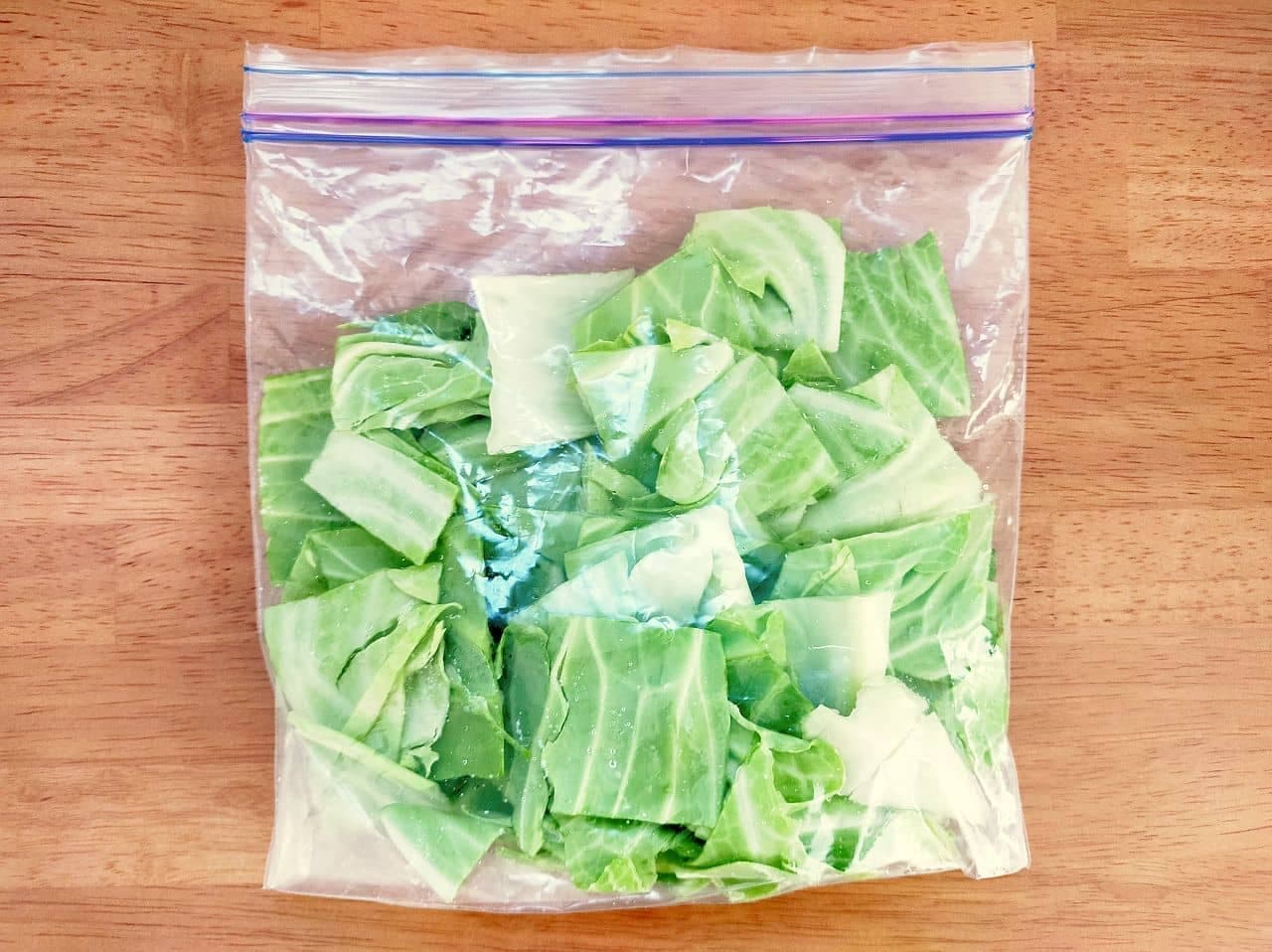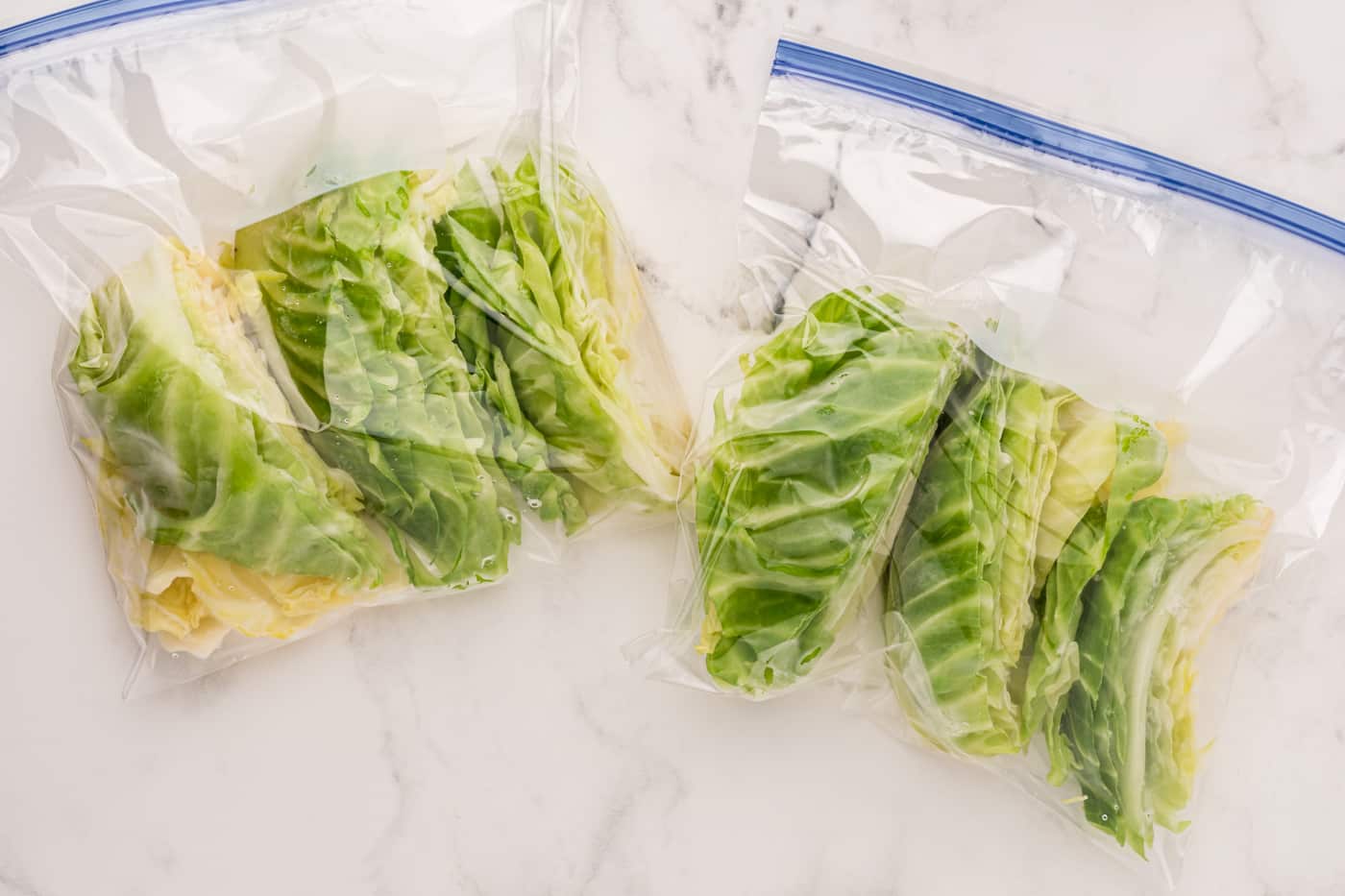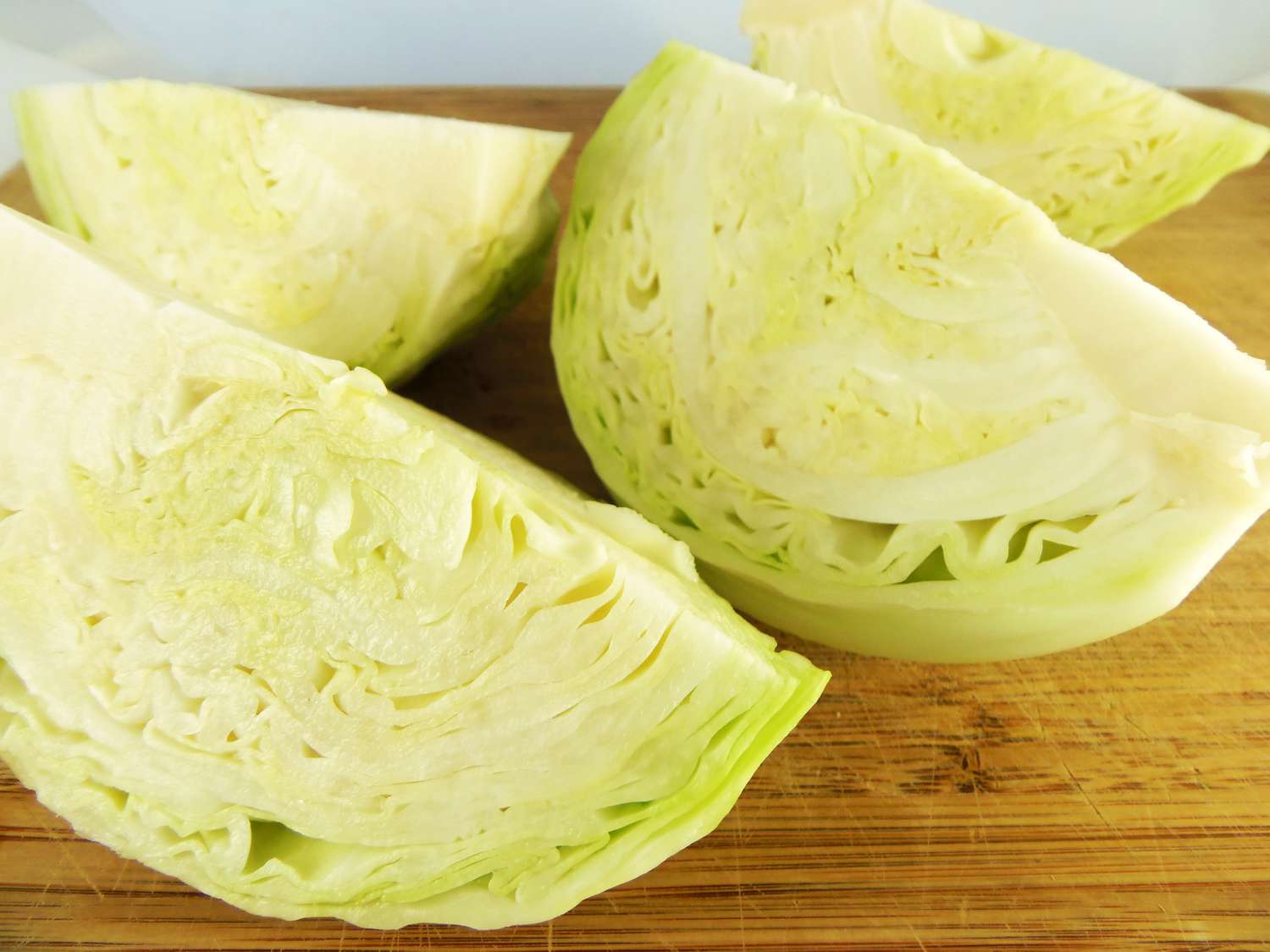The Ultimate Guide to Making the Most of Frozen Cabbage
Frozen cabbage is not just a convenient choice for busy cooks; it’s a gateway to transforming simple ingredients into mouthwatering dishes. This article aims to unveil the myriad ways frozen cabbage can be used to create culinary delights that are both nutritious and satisfying. The appeal of frozen cabbage lies in its ability to retain most of its nutrients, making it a healthful alternative to fresh cabbage, especially when out of season. Additionally, its longer shelf life ensures that you can enjoy cabbage’s benefits without the rush to use it before it spoils.
One of the key advantages of using frozen cabbage is the elimination of prep time. There’s no need to wash, chop, or slice – it’s ready to go straight from the freezer into the pan. This convenience makes it an excellent option for quick weeknight dinners or last-minute meal additions. Moreover, frozen cabbage maintains a consistency that’s hard to achieve with fresh cabbage, as it is often pre-cut in uniform pieces, ensuring even cooking and flavor distribution in every dish.
Cooking with frozen cabbage also opens up a variety of culinary possibilities. Whether you’re looking to sauté, roast, or even blend it into a creamy soup, this versatile vegetable adapts well to different cooking methods. Its mild flavor makes it a perfect canvas for a range of seasonings and ingredients, allowing you to create dishes that can range from the comfortingly familiar to the excitingly exotic.
In this article, we will explore several methods to enhance the flavor and texture of frozen cabbage, from sautéing with garlic and spices to roasting it into caramelized wedges. Each method promises to bring out the unique sweetness and crunch of cabbage, making it a star ingredient in any meal. By the end of this guide, you will have a new appreciation for the simplicity and versatility of frozen cabbage, equipped with recipes and tips to make it a staple in your culinary repertoire.
| Aspect | Details |
|---|---|
| Nutritional Value | Frozen cabbage retains most nutrients, offering a healthful alternative to fresh cabbage, especially out of season. |
| Shelf Life | Longer shelf life than fresh cabbage, allowing usage without the rush of spoiling. |
| Convenience | No need to wash, chop, or slice; ready to use from the freezer, making it ideal for quick meals. |
| Consistency | Often pre-cut in uniform pieces which ensures even cooking and flavor distribution. |
| Versatility in Cooking | Adaptable to various cooking methods like sautéing, roasting, or blending into soups. |
| Flavor Enhancement | Can be enhanced by sautéing with garlic and spices or roasting into caramelized wedges. |
Contents
Why Choose Frozen Cabbage?
Frozen cabbage offers several advantages over its fresh counterpart, making it a practical choice for many households. Firstly, the longer shelf life of frozen cabbage is a significant benefit. While fresh cabbage can wilt or spoil within a week or two, frozen cabbage can be stored for months without losing its nutritional value or flavor. This extended shelf life reduces food waste and ensures that you always have a nutritious vegetable on hand, even when it’s out of season.

Another advantage of frozen cabbage is its ease of preparation. Fresh cabbage requires washing, chopping, and sometimes peeling, which can be time-consuming. In contrast, frozen cabbage often comes pre-cut and ready to use, eliminating the prep work and making meal preparation quicker and more convenient. This can be especially beneficial on busy weeknights or when you need to put together a meal in a hurry.
| Benefit | Details |
|---|---|
| Longer Shelf Life | Frozen cabbage can be stored for months without losing its nutritional value or flavor, reducing food waste and ensuring availability out of season. |
| Ease of Preparation | Comes pre-cut and ready to use, eliminating the need for washing, chopping, and peeling, which speeds up meal preparation especially on busy weeknights. |
Tips for Preparing Frozen Cabbage
To get the best results from frozen cabbage, proper thawing is essential. The recommended method for thawing cabbage is to place it in the refrigerator overnight. This slow thawing process helps preserve the texture and flavor of the cabbage, preventing it from becoming too mushy or losing its crispness. It also ensures that the cabbage thaws evenly, making it easier to cook with consistent results.
After thawing, it’s crucial to drain any excess water from the cabbage. This step is important because thawed cabbage can release a significant amount of water, which can lead to sogginess and dilute the flavor of your dish. To drain the cabbage, gently press it in a colander or pat it dry with a clean towel. Removing the excess water helps maintain the cabbage’s texture and ensures that it can absorb the flavors of other ingredients more effectively during cooking. This simple step can make a noticeable difference in the quality of your finished dish.

| Step | Details |
|---|---|
| Thawing | Place frozen cabbage in the refrigerator overnight for slow thawing. This preserves texture and flavor, and prevents the cabbage from becoming mushy. |
| Draining Excess Water | After thawing, drain any excess water by pressing the cabbage in a colander or patting dry with a clean towel. This step prevents sogginess, dilution of flavors, and enhances the cabbage’s ability to absorb other flavors during cooking. |
Delicious Ways to Cook Frozen Cabbage
Sautéed Frozen Cabbage
Sautéing is a quick and flavorful way to prepare frozen cabbage, highlighting its natural sweetness and adding a delightful crunch. Here’s a simple step-by-step guide to making sautéed frozen cabbage:
- Preparation: Start by thawing your frozen cabbage in the refrigerator overnight. Once thawed, drain any excess water to ensure it doesn’t become soggy during cooking.
- Cooking: Heat a tablespoon of olive oil in a large skillet over medium heat. Once the oil is shimmering, add a clove of minced garlic and sauté until fragrant, about 1 minute.
- Adding Cabbage: Add the drained cabbage to the skillet. Season with salt, pepper, and a pinch of red pepper flakes to introduce a gentle heat.
- Sautéing: Stir the cabbage frequently to ensure even cooking. Continue to sauté for 8-10 minutes, or until the cabbage is tender but retains a slight crunch. This method preserves the vibrant color and texture of the cabbage.
- Finishing Touch: To enhance the flavor, squeeze a splash of fresh lemon juice over the cabbage just before removing it from the heat. This adds a refreshing zest that complements the natural sweetness of the cabbage.
- Serving: Serve the sautéed cabbage as a side dish, or use it as a topping for grilled or roasted meats. Its versatility makes it an excellent addition to a variety of meals.
Roasted Frozen Cabbage Wedges
Roasting frozen cabbage wedges is an excellent way to develop a deep, caramelized flavor. Follow these instructions for a dish that’s both simple and satisfying:
- Preparation: Thaw the frozen cabbage wedges in the refrigerator, then drain them well to remove excess moisture.
- Seasoning: Preheat your oven to 425°F (220°C). Arrange the cabbage wedges on a baking sheet lined with parchment paper. Brush each wedge with olive oil and sprinkle with salt, pepper, and your choice of herbs like thyme or rosemary for added aroma.
- Roasting: Place the baking sheet in the oven and roast for 25-30 minutes. The high heat will caramelize the edges of the cabbage, turning them golden brown and crispy.
- Garnishing: After roasting, sprinkle the wedges with grated parmesan cheese for a savory, cheesy finish that complements the natural flavors of the cabbage.
- Serving: Serve these roasted wedges as a standalone side dish or alongside a main course. Their robust flavor and appealing texture make them a hit in any meal setting.
Creamy Frozen Cabbage Soup
For a comforting and hearty meal, try this creamy frozen cabbage soup. It combines a rich blend of vegetables and a creamy texture for a satisfying experience:
- Base Preparation: In a large pot, melt a knob of butter over medium heat. Add diced onions and cook until they are translucent and aromatic.
- Vegetable Addition: Introduce diced carrots and celery to the pot, along with the thawed and drained cabbage. Sauté the vegetables together for a few minutes to meld the flavors.
- Simmering: Pour in enough vegetable or chicken broth to cover the vegetables. Bring the mixture to a boil, then lower the heat and let it simmer for about 20-25 minutes until the vegetables are tender.
- Blending: Use an immersion blender to purée the soup directly in the pot until it’s smooth and creamy. Alternatively, transfer the mixture to a regular blender in batches, being careful with the hot liquid.
- Creamy Finish: Stir in a splash of heavy cream or milk to add richness and creaminess to the soup. Season with salt, pepper, and herbs to taste.
- Serving: Ladle the soup into bowls and garnish with fresh herbs like parsley or dill for a fresh contrast to the creamy base.
| Dish | Method | Key Steps and Ingredients |
|---|---|---|
| Sautéed Frozen Cabbage | Sautéing | 1. Thaw and drain cabbage. 2. Sauté minced garlic in olive oil, then add cabbage. 3. Season with salt, pepper, red pepper flakes. 4. Cook until tender but crunchy, finish with lemon juice. 5. Serve as a side or topping for meats. |
| Roasted Frozen Cabbage Wedges | Roasting | 1. Thaw and drain cabbage wedges. 2. Brush with olive oil and season with salt, pepper, herbs. 3. Roast at 425°F (220°C) until caramelized. 4. Garnish with grated parmesan cheese. 5. Serve as a side or with a main course. |
| Creamy Frozen Cabbage Soup | Blending | 1. Sauté onions, then add carrots, celery, and cabbage. 2. Add broth and simmer until vegetables are tender. 3. Blend until smooth, then stir in cream or milk. 4. Season with salt, pepper, and herbs. 5. Serve garnished with fresh herbs. |
More Delicious Recipes Featuring Frozen Cabbage
Hearty Cabbage and Sausage Delight
Dive into the rustic flavors of this Hearty Cabbage and Sausage Delight, a one-pan wonder that’s as satisfying as it is simple. Start by thawing and draining your frozen cabbage to ensure it’s ready to meld seamlessly with other ingredients. In a large skillet, heat a touch of olive oil and brown your favorite sausage slices until they’re crispy on the outside. Add a diced onion and a few cloves of minced garlic to the pan, sautéing until fragrant. Next, incorporate the cabbage, stirring well to combine with the rich flavors of the sausage and onions. Season with salt, pepper, and a dash of paprika for a hint of smokiness. Cover and let the mixture simmer for about 15 minutes, or until the cabbage is tender and the flavors have melded beautifully. This dish is perfect for a hearty dinner and pairs wonderfully with a side of crusty bread or mashed potatoes.

Velvety Cabbage Soup Indulgence
For a comforting meal that warms from within, try this Velvety Cabbage Soup Indulgence. Begin by thawing and draining the frozen cabbage. In a large pot, melt some butter and sauté diced onions until they are translucent. Add minced garlic and cook for another minute before introducing the cabbage, diced potatoes, and sliced carrots. Pour in enough chicken or vegetable broth to cover the vegetables and bring to a boil. Reduce the heat and simmer until all the vegetables are tender, about 20 minutes. Using an immersion blender, puree the soup until it achieves a smooth and creamy texture. Stir in a splash of heavy cream and season with salt, freshly ground black pepper, and a sprinkle of nutmeg for depth. Serve this luscious soup hot, garnished with a dollop of sour cream and chopped chives for an extra layer of flavor.
Crispy Cabbage Wedges Delicacy
Enjoy the Crispy Cabbage Wedges Delicacy, where the natural sweetness of cabbage meets the irresistible charm of caramelization. After thawing and draining the cabbage, cut it into thick wedges, ensuring each piece has a bit of the core to hold it together. Drizzle olive oil over the wedges, then sprinkle with sea salt, cracked black pepper, and your choice of herbs—rosemary and thyme work beautifully. Place the wedges on a lined baking sheet and roast in a preheated oven at 425°F (220°C) for 25-30 minutes, turning once, until the edges are golden and crisp. Before serving, brush the wedges with a light glaze of balsamic vinegar and honey mixture for a glossy, flavorful finish. These wedges make a fantastic side dish or a vegetarian centerpiece with their rich, caramelized texture.
Zesty Sautéed Cabbage Creation
Light and full of flavor, the Zesty Sautéed Cabbage Creation is a quick and easy dish that brightens any meal. Begin by thawing and thoroughly draining the frozen cabbage. In a skillet, heat a drizzle of olive oil and sauté minced garlic until aromatic. Add the cabbage, stirring frequently to ensure even cooking. For a burst of citrus, zest a lemon over the cabbage, then squeeze in some of its juice for tangy freshness. Season with salt, pepper, and a pinch of red chili flakes for a bit of heat. Continue to sauté until the cabbage is tender-crisp, about 8-10 minutes. Garnish with chopped fresh parsley and serve this zesty creation alongside grilled fish or chicken for a light, satisfying meal.
| Recipe | Description | Key Ingredients and Steps |
|---|---|---|
| Hearty Cabbage and Sausage Delight | A one-pan dish combining the rustic flavors of sausage and cabbage for a satisfying meal. | 1. Thaw and drain frozen cabbage. 2. Brown sausage slices in olive oil. 3. Sauté diced onion and minced garlic. 4. Add cabbage, season with salt, pepper, and paprika. 5. Simmer for 15 minutes. 6. Serve with bread or mashed potatoes. |
| Velvety Cabbage Soup Indulgence | A creamy, comforting soup featuring cabbage, potatoes, and carrots, blended to perfection. | 1. Thaw and drain frozen cabbage. 2. Sauté diced onions and minced garlic in butter. 3. Add cabbage, potatoes, carrots, and broth. 4. Simmer until tender, then blend until smooth. 5. Stir in heavy cream, season with salt, pepper, and nutmeg. 6. Garnish with sour cream and chives. |
| Crispy Cabbage Wedges Delicacy | Roasted cabbage wedges caramelized to perfection, finished with a balsamic and honey glaze. | 1. Thaw and drain frozen cabbage, cut into wedges. 2. Drizzle with olive oil, season with salt, pepper, and herbs. 3. Roast at 425°F (220°C) until golden. 4. Glaze with balsamic vinegar and honey before serving. |
| Zesty Sautéed Cabbage Creation | A quick, citrus-infused sautéed cabbage dish, perfect as a side for grilled proteins. | 1. Thaw and drain frozen cabbage. 2. Sauté minced garlic in olive oil. 3. Add cabbage, season with lemon zest, juice, salt, pepper, and red chili flakes. 4. Cook until tender-crisp. 5. Garnish with fresh parsley. |
Frozen cabbage is an incredibly versatile and convenient ingredient that can transform into an array of delightful dishes. From the hearty comfort of cabbage and sausage to the smooth richness of velvety soup, the crispness of roasted wedges, and the bright zing of sautéed cabbage, these recipes showcase the adaptability and flavor potential of frozen cabbage. By incorporating this humble vegetable into your cooking, you’ll discover new ways to enjoy its nutritional benefits and elevate your meals with ease and creativity.
Cabbage -Ethiopian Cabbage and Potato Dish A Simple Flavorful Recipe
How to Grow and Care for Late Flat Dutch Cabbage
German Cooked Red Cabbage A Classic Side Dish with Nutrition
Savory Chinese Red Cabbage Recipe A Twist on Tradition
Delicious Discoveries Mastering the Art of Canned Cabbage
Benefits of Cabbage Fufu A Keto Alternative to Traditional
Unlocking the Power of Cabbage for Weight Loss Your Complete Guide